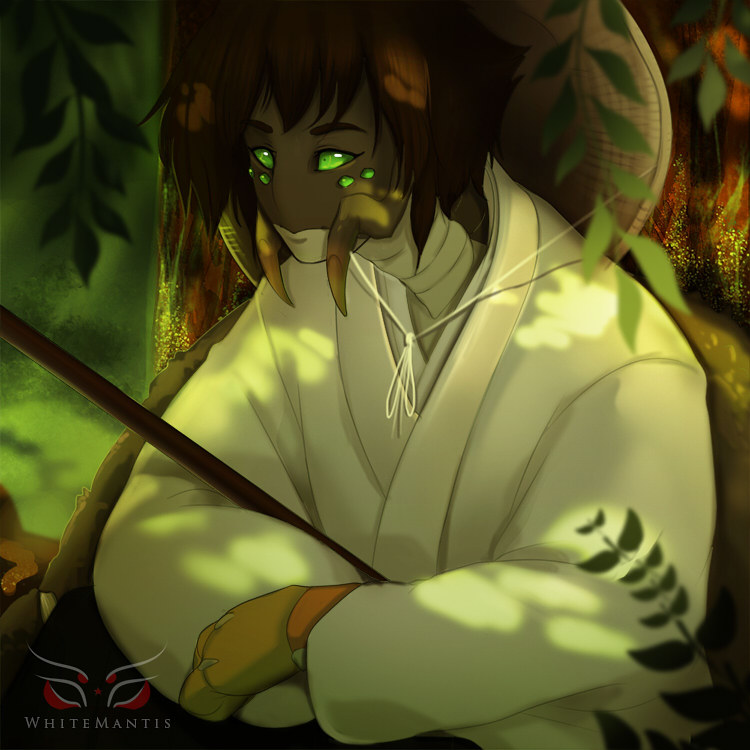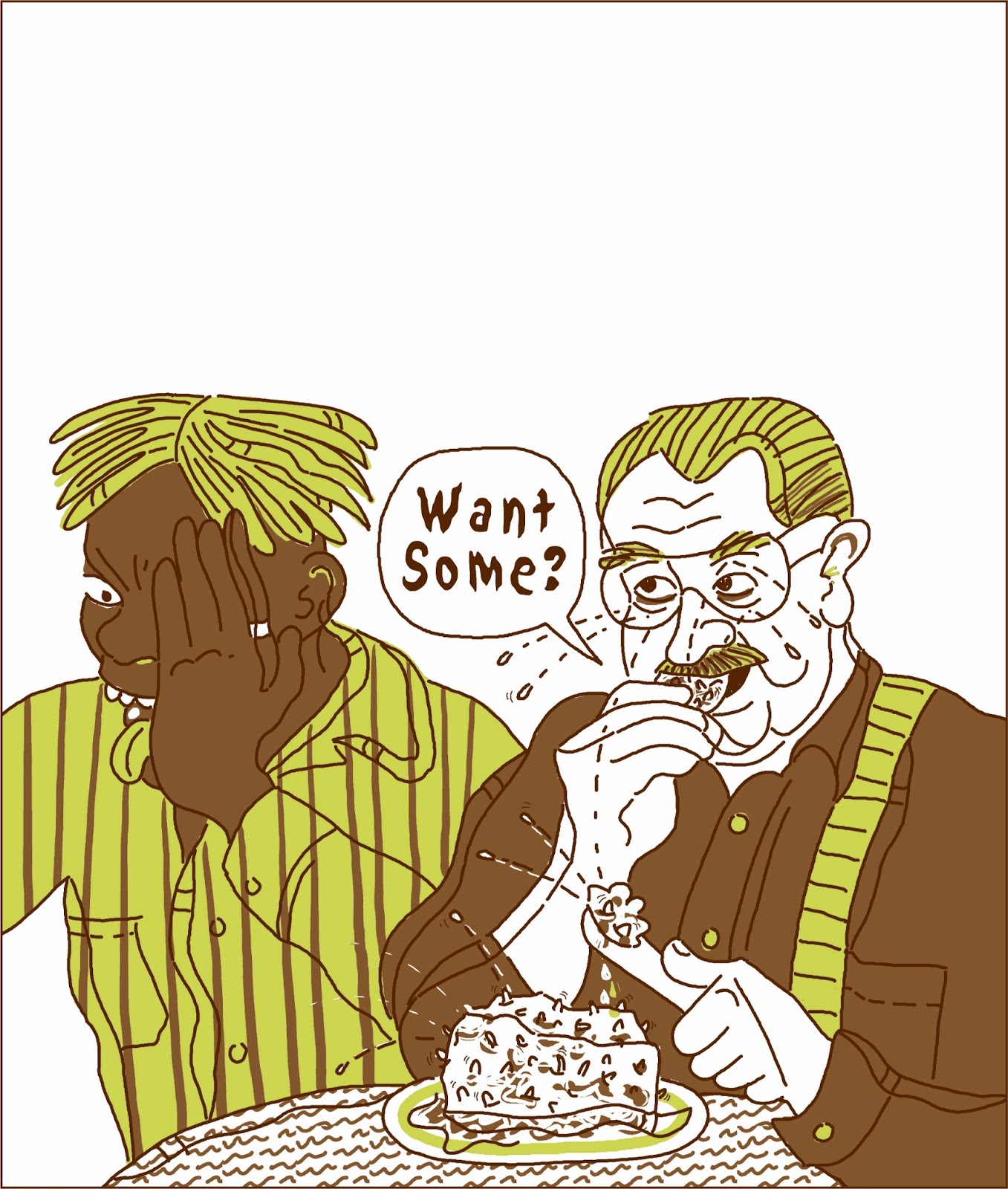Tuesday, February 25, 2014
Ants Make Rafts Out of Their Young
A clever spontaneous trick? More like an ADAPTATION!
Watch the Video, Read the Article
yay, ants!
-Tatiana
Friday, February 21, 2014
A Leaf Katydid looks like a Leaf, why?
Why do so many insects look like leaf, stick or tree bark? We talked about evolution and natural selection last week. This
video is a nice refresher for the topic.
The artist Ze Frank made a series of True Facts video. All of them are worth watching. Here are 2 other that are also related to insects.
Shelly
Time-Lapse Insects (striding along)
Water Striders from Dennis Hlynsky on Vimeo.
A nice video allowing us to watch the sporadic dances of water striders. Completely random? Likely not, but motivated, complex and stochastic in equal measure perhaps.
Hlynsky also has some other entomological, avian, and piscine time-lapse videos on his Vimeo site!
AY
Thursday, February 20, 2014
Who made the grasshopper?
The Summer Day (by Mary Oliver)
Who made the world?
Who made the swan, and the black bear?
Who made the grasshopper?
This grasshopper, I mean-
the one who has flung herself out of the grass,
the one who is eating sugar out of my hand,
who is moving her jaws back and forth instead of up and down-
who is gazing around with her enormous and complicated eyes.
Now she lifts her pale forearms and thoroughly washes her face.
Now she snaps her wings open, and floats away.
I don't know exactly what a prayer is.
I do know how to pay attention, how to fall down
into the grass, how to kneel down in the grass,
how to be idle and blessed, how to stroll through the fields,
which is what I have been doing all day.
Tell me, what else should I have done?
Doesn't everything die at last, and too soon?
Tell me, what is it you plan to do
with your one wild and precious life?
from New and Selected Poems, 1992
Beacon Press, Boston, MA
Copyright 1992 by Mary Oliver.
Beacon Press, Boston, MA
Wednesday, February 19, 2014
Insect Art, Paper Styley
Check out some more of these insects (and other stylings) here by Lobulo Design:
http://www.thisiscolossal.com/2013/09/lobulo-design-papercraft/
Tuesday, February 18, 2014
White Mantis
Yo.
So I found this pretty cool artist on tumblr who creates portraits using various anthropomorphic insects as the subject matter. They're really well rendered and look dashingly pretty (and some are cute).
The artist is Nae, or White Mantis (click the name to check out the blog).
- Zach
So I found this pretty cool artist on tumblr who creates portraits using various anthropomorphic insects as the subject matter. They're really well rendered and look dashingly pretty (and some are cute).
The artist is Nae, or White Mantis (click the name to check out the blog).
(This one's a spider, but still coo)
- Zach
Monday, February 17, 2014
Flight of the Butterflies
Flight of the Butterflies, a new film will be showing at the Chicago Museum of Science and Industry starting February 28th. Looks beautiful. It's specifically about the migration of the Monarch butterflies.
more information here
-Liana
Insects as Sous-Chefs
Check out this amazing tea called the Gui Fei Cha, or concubine tea.
It reminds me of a recipe that I came across in one of Sandor Katz's writings for a cheese called casu marzu that is made through a process of allowing maggots to hatch and digest goats milk into the product for humans to consume. As he indicates, it may be difficult to have a taste of such extraordinary delicacies in the United States due to our "strict" (or biased) food policies."It's produced by a unique method: it's briefly attacked by insects, tea green leaf hoppers. The plant's natural defense to the invasion changes the flavor of the leaf and unexpectedly yields a distinctive floral almost honey-like aroma and taste to the tea."
-Liana
Tuesday, February 11, 2014
"Flies like a hummingbird...." but really is a moth.
WE talked about flight in class this week as well as Lepidopterans.
While most moths are night flyers, some grace us with their presence in the day too, and especially in the summer and fall of 2013 in the case of the White Lined Sphinx moth whose numbers exploded across Chicago for some reason. This is a video of one in Andersonville in August, busy eating up some Hosta nectar...
AY
Chikungunya fever...in the Caribbean!
It is hard to pronounce, and until recently equally hard to catch here in the Western Hemisphere, but now the mosquitoes that carry the parasite that causes Chikungunya fever have invaded the Caribbean, expanding from its usual Asian and African haunts... Here is how the CDC describes the disease
Interestingly, the New York Times just reported on a new discovery in how not only the antennae of this species of mosquito (Aedes aegypti) smell, but how their SPERM also have a sense of smell! New targets for battling these pests?
AY
Worm Sex: A Vermicomposting Workshop
I know, NOT an insect, but perhaps suffering from the same kind of cultural misunderstandings as insects. This Friday (Valentine's Day!) I am hosting a very modest workshop on indoor composting with worms as part of the Student Environmental Action's Apartment Growing Series, an initiative to provide urban students with the resources to grow plants indoors. A friendly session of sex ed for worms and the 101 on starting an indoor compost for yourself. If you have any interest, date or no date, come Friday and take home free wooorrrmm helpers.
-liana
https://www.facebook.com/events/212029715661389/
-liana
https://www.facebook.com/events/212029715661389/
Saturday, February 8, 2014
Pugnacious Flies ( aggression = a couple extra nuerons + brain chemical? )
Check out this article about this recent study on aggression in fruit flies that seems to demonstrate what strutures in the brain of male fruit flies contribute to their greater aggression than females AND the gene (which codes for a brain chemical) that seems to control this aggressive behavior.
It is some top-notch research. Of course it is also a bit eerie to the extent that flies maty be models for mammalian (and human behavior). Why say this? Because the reporter James Gorman (and I'm sure the resaerhcers as well) point out this gene is also found in humans, reaising the question as to whether one might be able to "tweak the gene" or brain chemistry, and thus tweak the behavior.
Of course there are very important medical reasons to do this, but also some potentially oversimplifying conclusions one might try to draw. After all, does this gene then simply "do the same thing" in humans in such simplistic a fashion? That is what reporter James Gorman seems to imply in the video which seems sloppy and overstepping of what this experiment can tell us about human behavior. Some dee questions here. Either way, some real nice scientific work.
The VIDEO is a fascinating synopsis of the behavior as well as fruit fly brain scans that show the nuerons in question!
AY
Monday, February 3, 2014
Artists Work with Bees
These artists are fascinated by the forms and structures made by honey bees. They consider their works as collaborations with bees, allowing them to add to and change its context.
Ladislav R. Hanka
Ladislav R. Hanka
- Liana
Sunday, February 2, 2014
Kingdom-jumping Virus Linked to Colony Collapse in Bees
As we well know, the biological world is more complex than can be imagined, and mysteries abound.
Scientists continue to make sense of the dramatic appearance of the Colony Collapse Disorder phenomena several years back.
Back in 2010, it seemed a unique combination of fungus and virus was the culprit. seemed to be the culprit. Then recently popular pesticides called neonicotinoids were implicated in bee deaths, leading to great controversy as to whether these pesticides should be banned, at least in the short term to help investigate their effects.
Now: reports out say yet another virus has been found to be involved. What is novel about this one is the suggestion that it is a plant virus that has jumped to become infectious and damaging to bees.
Of course the larger question is: What is it about modern industrial agriculutural practices (the treatment of crops and system of honeybee crowding and circulation) that might give rise or exacerbate the prevalence of bee pathogens and colony collapse. Also with considering is the general environmental stresses the bees face in their pollinating lives, such as the effect of pollution of sense of smell.
AY
Subscribe to:
Posts (Atom)













